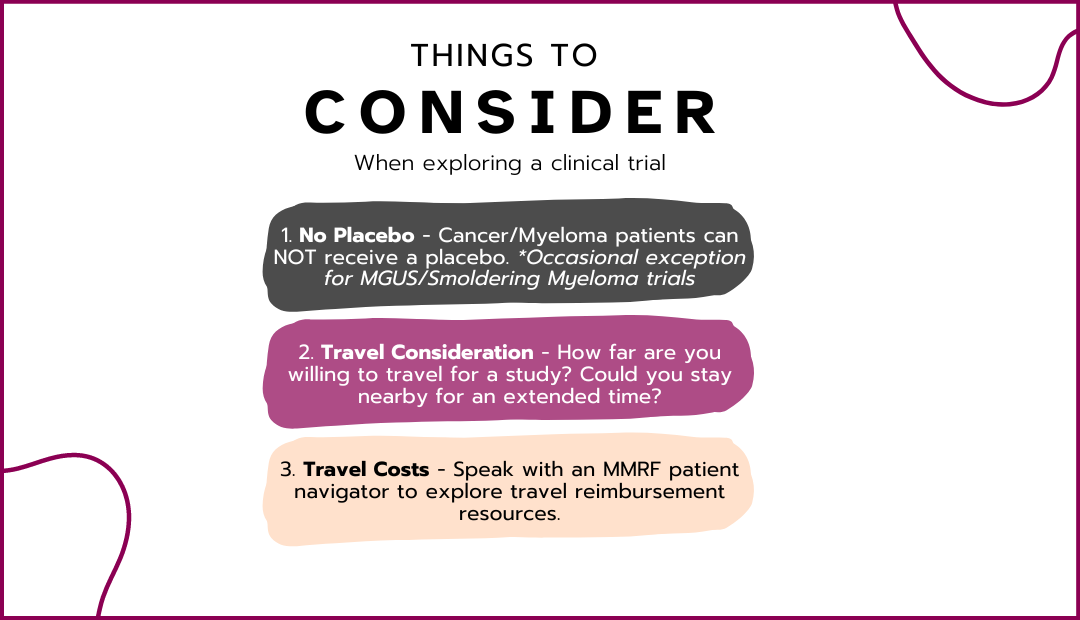Subcutaneous Talquetamab in Elderly Patients With Multiple Myeloma in Early Relapse
NCT06827860
Age 70 +
Sex Both
Phase Phase 2
Third Opinion Trial Synopsis
In this clinical study, researchers are exploring a new treatment approach for patients with a specific type of blood cancer. The study focuses on a combination of therapies that aim to improve patient outcomes and potentially offer a more effective treatment option. Here are some key details about the study:
- The study investigates a unique combination of therapies that have not been widely used together before, which may enhance their effectiveness.
- Participants will receive treatment in a controlled environment, allowing researchers to closely monitor their responses and side effects.
- This approach aims to target the cancer more effectively while minimizing harm to healthy cells, which is a significant concern in traditional treatments.
- Patients will be evaluated based on various criteria, including their overall health and specific characteristics of their cancer, to ensure the treatment is tailored to their needs.
- The study includes a diverse group of participants, which may help researchers understand how different individuals respond to the treatment.
Third Opinion AI Generated Synopsis
Trial Summary
Induction therapy approaches in recent years have evolved, now utilizing triple or quadruple drug regimens in the majority of patients. By combining anti-CD38 antibodies, proteasome inhibitors (PIs), immunomodulatory drugs (IMiDs), and steroids, patients achieve longer remissions with their first- and second-line therapies but also become refractory to most or all three major drug classes earlier. For patients who are refractory to at least 3 of the commonly administered PIs and IMiDs, occurring after 2 lines of therapy in many, the median overall survival is only 5 months. Elderly, frail patients are not often candidates at this point for aggressive therapies like stem cell transplantation and CAR T-cell therapy thus necessitating effective yet tolerable treatments for elderly patients in early relapse (1-3 prior therapy). Talquetamab is a GPRC5DxCD3 bispecific antibody that redirects patients' T cells to myeloma cells which express GPRC5D. In the phase 1 MonumenTAL-1, heavily pretreated patients with a median of 6 prior lines of therapy attained a 70% response rate with 405 μg/kg of subcutaneous (SC) talquetamab. Importantly, subcutaneous talquetamab was found to be tolerable for the treated population, which included 28% of patients aged ≥70, with only three patients experiencing dose-limiting toxicities in the form of grade 3 rashes which responded to steroids. The anti-CD38 antibody daratumumab eliminates CD38-positive T and B regulatory cells, potentiates the activity of bispecific antibodies like talquetamab, and may improve its efficacy when used in combination. The aim of this study will be to assess the efficacy and safety of treating elderly patients with relapsed/refractory multiple myeloma with at least ≥2 prior lines of therapy with subcutaneous talquetamab. Patients who have progressive disease on talquetamab or who fail to respond after 3 cycles will have subcutaneous daratumumab added to their regimen.
Induction therapy approaches in recent years have evolved, now utilizing triple or quadruple drug regimens in the majority of patients. By combining anti-CD38 antibodies, proteasome inhibitors (PIs), immunomodulatory drugs (IMiDs), and steroids, patients achieve longer remissions with their first- and second-line therapies but also become refractory to most or all three major drug classes earlier. For patients who are refractory to at least 3 of the commonly administered PIs and IMiDs, occurring after 2 lines of therapy in many, the median overall survival is only 5 months. Elderly, frail patients are not often candidates at this point for aggressive therapies like stem cell transplantation and CAR T-cell therapy thus necessitating effective yet tolerable treatments for elderly patients in early relapse (1-3 prior therapy). Talquetamab is a GPRC5DxCD3 bispecific antibody that redirects patients' T cells to myeloma cells which express GPRC5D. In the phase 1 MonumenTAL-1, heavily pretreated patients with a median of 6 prior lines of therapy attained a 70% response rate with 405 μg/kg of subcutaneous (SC) talquetamab. Importantly, subcutaneous talquetamab was found to be tolerable for the treated population, which included 28% of patients aged ≥70, with only three patients experiencing dose-limiting toxicities in the form of grade 3 rashes which responded to steroids. The anti-CD38 antibody daratumumab eliminates CD38-positive T and B regulatory cells, potentiates the activity of bispecific antibodies like talquetamab, and may improve its efficacy when used in combination. The aim of this study will be to assess the efficacy and safety of treating elderly patients with relapsed/refractory multiple myeloma with at least ≥2 prior lines of therapy with subcutaneous talquetamab. Patients who have progressive disease on talquetamab or who fail to respond after 3 cycles will have subcutaneous daratumumab added to their regimen.
from ClinicalTrials.gov
Locations & Contact
Fill out the form and to let the Multiple Myeloma Research Foundation know you are interested in this trial.
Contacts:

